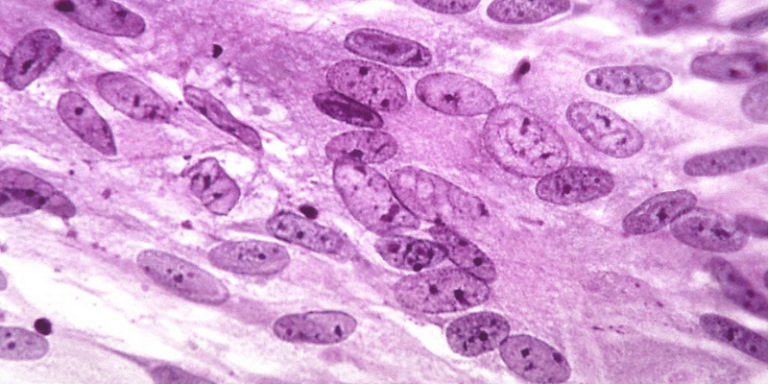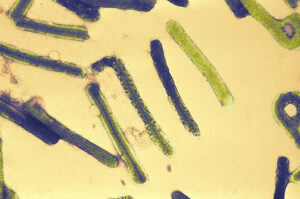Viruses: Just the Facts
What is a virus anyway, and how does it infect us?
By: Laura Valkovic | May 11, 2020 | 579 Words

(Photo by Smith Collection/Gado/Getty Images)
When we get sick, it is often because a microbe – like bacteria or a virus – has entered our body. The Coronavirus pandemic has impacted millions of people around the world – but what is a virus, anyway? Here at LN Gen Z, we thought it was time to take the mystery out of COVID-19.
What is a virus?
Viruses are microscopic creatures, even smaller than bacteria. They are a recent discovery. In 1892, Russian botanist Dmitri Ivanovsky was looking for the reason that diseased tobacco plants remained infected even when bacteria were filtered out – the culprit was tobacco mosaic virus. In 1898, Dutch botanist Martinus Beijerinck termed the infectious substance a “virus.” In the early 20th century, many viruses were discovered and viewed under microscopes.
Viruses have a very simple make-up. They consist of only a few parts. In the middle is some genetic material – DNA or RNA. This is surrounded by a protein coating, called a “capsid.” Some also have an added “envelope,” made of lipids (fats) that surrounds the capsid. The SARS-CoV-2 coronavirus, which causes COVID-19, has an envelope like this. The spiky shape is created by added proteins that stick out of the envelope – these attach to cells in the human body.
The first known viruses infected plants, and many don’t infect humans at all. Every form of life can be infected by different viruses, including domestic and wild animals, and even bacteria. Some people have suggested that SARS-CoV-2 was a bat virus that got transferred to humans who ate bats.
Is a Virus Alive?

(Photo By BSIP/UIG Via Getty Images)
Viruses are a type of parasite. They can’t reproduce outside of a host body, so they can only make new generations by piggybacking on a host’s cells’ ability to replicate. In fact, viruses are mysterious creatures – scientists aren’t sure whether they are alive or not. Normally, a living organism can reproduce on its own or with others of its species. Since viruses need a host cell to create “babies,” they seem to be a cross between a chemical substance and a biological organism – or “organisms at the edge of life.”
The Coronavirus Family
There are lots of varieties of coronavirus, but only seven affect humans. Four of them (called 229E, NL63, OC43, and HKU1) cause the common cold – also known as an upper respiratory infection. These mostly affect the nose, throat, and sinuses. So, what makes SARS-CoV-2 more serious?
Along with two other members of the coronavirus family – MERS and SARS – it can also cause a lower respiratory infection, which affects the lungs.
SARS-CoV-2 also has the ability to disrupt the chemical messages between our immune cells. This can delay our body’s immune response, giving the infection a head start before our immune system can mount a defense.
The immune system can usually catch up to defeat this virus, which is why most healthy people easily survive an infection. People who have weakened immune systems or those with existing problems of the lungs and respiratory system are less able to defend themselves. Even the common cold can pose serious problems for these people.
You may have heard COVID-19 compared to the flu – that’s because the influenza virus also infects the respiratory cells and is usually not serious except in people whose systems are already damaged
Now that you know what a virus is, stay tuned to find out how your body deals with it!
















